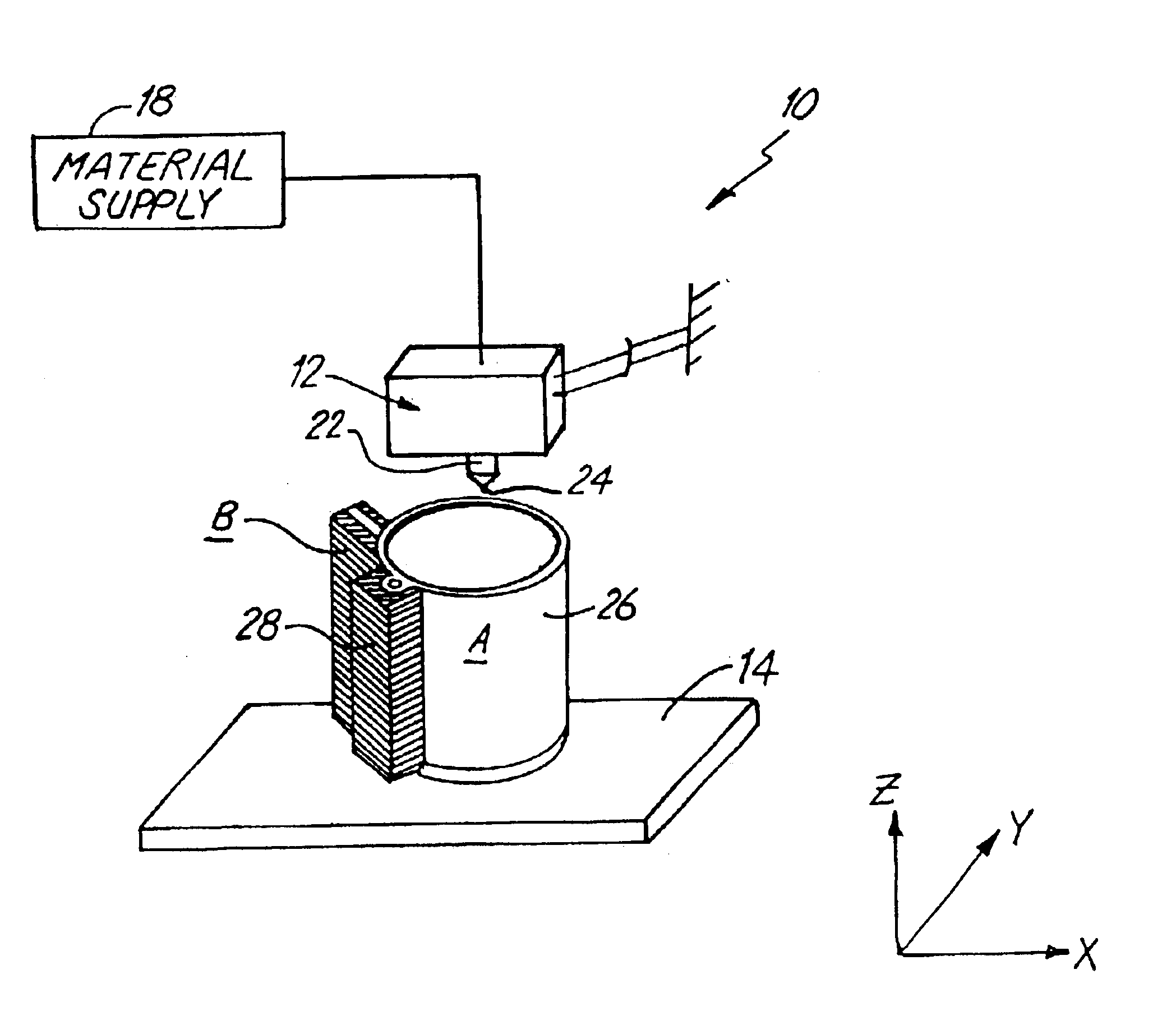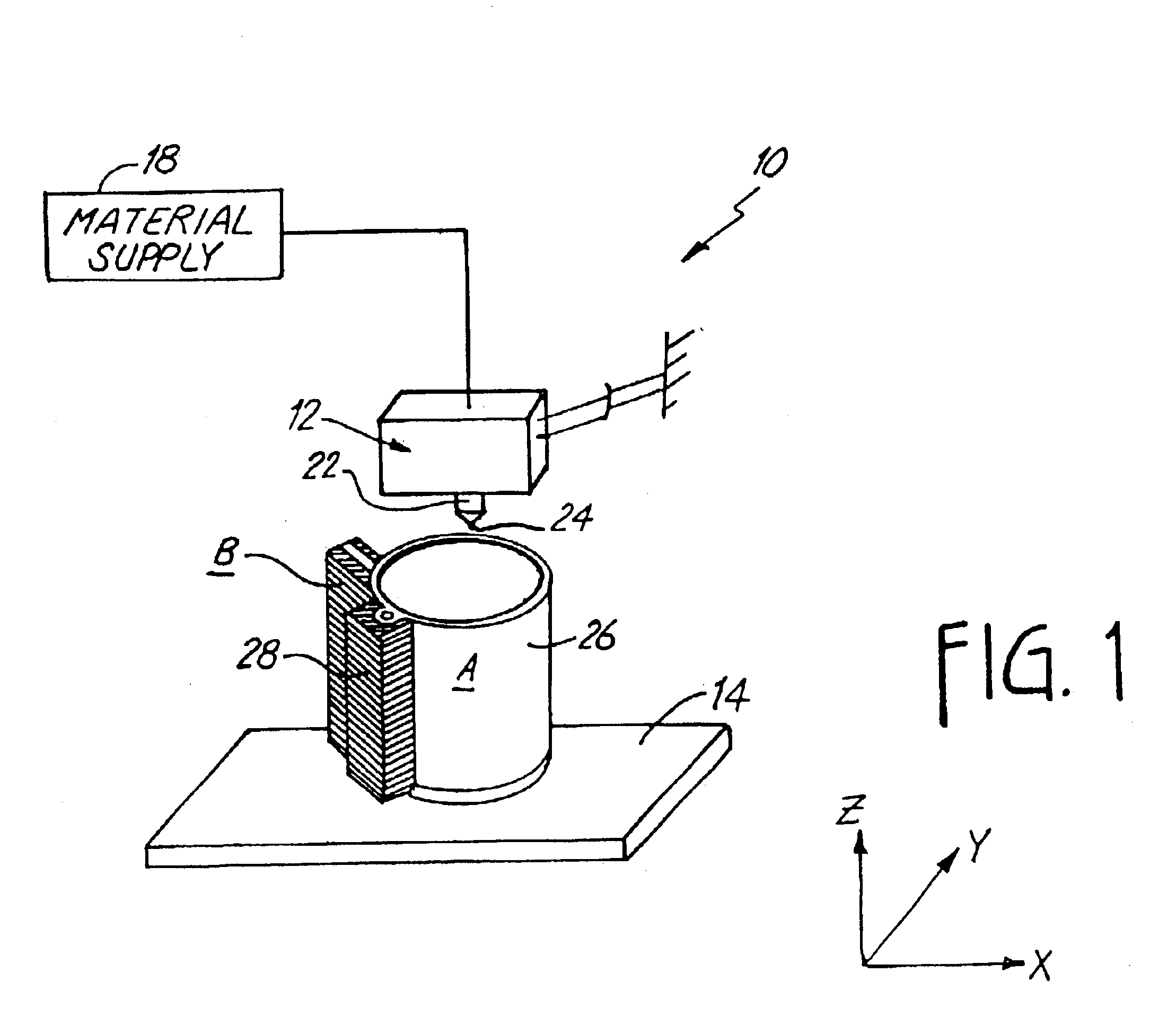Material and method for three-dimensional modeling
- Summary
- Abstract
- Description
- Claims
- Application Information
AI Technical Summary
Benefits of technology
Problems solved by technology
Method used
Image
Examples
example 1
Test models were built in an oven (i.e. build chamber) having a temperature of about 200-225° C., using the polyphenylsulfone modeling material and a support material which comprised various resins of polyethersulfone, polyphenylsulfone or polyetherimide (i.e., Ultem™). These support materials exhibited favorable thermal stability, but could not be broken away from the model. The support material containing polyphenylsulfone adhered very strongly to the model. The support material containing polyetherimide adhered fairy strongly to the model, and the support material containing polyethersulfone, while exhibiting the least adherence to the model, adhered too strongly for suitable use.
Also, the materials of this example exhibited an undesirable build-up in the Liquifier. After extrusion of only about 7 pounds of material, the liquifier needed replacement due to clogging.
example 2
Large and small polyphenylsulfone models were built in an oven having a temperature of about 200-225° C., using a support material comprising a polyethersulfone base polymer and a silicone release agent. For convenience, commercially available compounds were used to provide a “masterbatch” containing silicone, which was compounded with the base polymer. Various masterbatches were tested, which included polypropylene, linear low-density polyethylene, and high-impact polystyrene. Additionally, various silicones were tested, ranging in viscosity from about 60,000 centistokes (intermediate viscosity) to 50 million centistokes (very high viscosity). The very high viscosity silicones have a high molecular weight, while the lower viscosity silicones have a lower molecular weight.
It was found that intermediate viscosity silicone was a much better release agent than the very high viscosity silicone, and that the high-impact polystyrene masterbatch released more easily from the polyphenylsulf...
example 3
Large and small polyphenylsulfone models were built in an oven having a temperature of about 200-230° C., using the support material consisting of polyethersulfone, high-impact polystyrene and a silicone release agent, as described in Example 2. In this example, silicone was added to the PPSF resin as well. Various concentrations of silicone were tested, up to about 5 weight percent silicone, using various masterbatches.
It was found that the silicone additive marginally increased liquifier life, from about 7 pounds of extruded modeling material to about 10 pounds. The silicone additive likewise marginally improved releasability of the model from its support structure.
PUM
| Property | Measurement | Unit |
|---|---|---|
| Temperature | aaaaa | aaaaa |
| Temperature | aaaaa | aaaaa |
| Temperature | aaaaa | aaaaa |
Abstract
Description
Claims
Application Information
 Login to View More
Login to View More - R&D
- Intellectual Property
- Life Sciences
- Materials
- Tech Scout
- Unparalleled Data Quality
- Higher Quality Content
- 60% Fewer Hallucinations
Browse by: Latest US Patents, China's latest patents, Technical Efficacy Thesaurus, Application Domain, Technology Topic, Popular Technical Reports.
© 2025 PatSnap. All rights reserved.Legal|Privacy policy|Modern Slavery Act Transparency Statement|Sitemap|About US| Contact US: help@patsnap.com


